
The swifts are a family, Apodidae, of highly aerial birds. They are superficially similar to swallows, but are not closely related to any passerine species. Swifts are placed in the order Apodiformes with hummingbirds. The treeswifts are closely related to the true swifts, but form a separate family, the Hemiprocnidae.
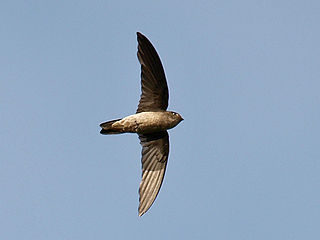
Swiftlets are birds from the four genera Aerodramus, Collocalia, Hydrochous and Schoutedenapus, which form the tribe Collocaliini within the swift family Apodidae. The group contains around thirty species mostly confined to southern Asia, south Pacific islands, and northeastern Australia, all within the tropical and subtropical regions. They are in many respects typical members of the Apodidae, having narrow wings for fast flight, with a wide gape and small reduced beak surrounded by bristles for catching insects in flight. What distinguishes many but not all species from other swifts and indeed almost all other birds is their ability to use a simple but effective form of echolocation to navigate in total darkness through the chasms and shafts of the caves where they roost at night and breed.

Aerodramus is a genus of small, dark, cave-nesting birds in the Collocaliini tribe of the swift family. Its members are confined to tropical and subtropical regions in southern Asia, Oceania and northeastern Australia. Many of its members were formerly classified in Collocalia, but were first placed in a separate genus by American ornithologist Harry Church Oberholser in 1906.

The Indian swiftlet or Indian edible-nest swiftlet is a small swift. It is a common resident colonial breeder in the hills of Sri Lanka and south west India.
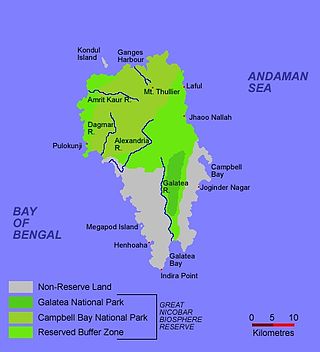
The Great Nicobar Biosphere Reserve encompasses a large part of the island of Great Nicobar, the largest of the Nicobar Islands in the Indian Union Territory of Andaman and Nicobar Islands. The Nicobars lie in the Bay of Bengal, eastern Indian Ocean, 190 km (120 mi) to the north of the Indonesian island of Sumatra. The Reserve has a total core area of approximately 885 km2, surrounded by a 12 km-wide "forest buffer zone". In year 2013 it was included in the list of Man and Biosphere program of UNESCO to promote sustainable development based on local community effort and sound science.

The uniform swiftlet,, also known as the Vanikoro swiftlet or lowland swiftlet, is a gregarious, medium-sized swiftlet with a shallowly forked tail. The colouring is dark grey-brown, darker on the upperparts with somewhat paler underparts, especially on chin and throat. This species is widespread from the Philippines through Wallacea, New Guinea and Melanesia. It forages for flying insects primarily in lowland forests and open areas. It nests in caves where it uses its sense of echolocation, rare in birds, to navigate.
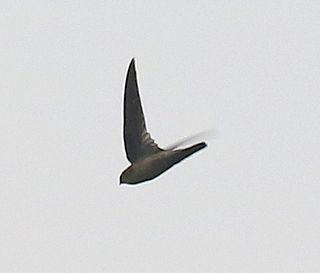
The Himalayan swiftlet is a small swift. It is a common colonial breeder in the Himalayas and Southeast Asia. Some populations are migratory.

The Seychelles swiftlet is a small bird of the swift family. It is found only in the Seychelles Islands in the Indian Ocean.

The glossy swiftlet is a species of swift in the family Apodidae. It is found on the Indonesian island of Sulawesi and eastwards to New Guinea, the Bismarck Archipelago and the Solomon Islands.

Germain's swiftlet is a species of swift.
The mountain swiftlet is a species of swift in the family Apodidae. It is endemic to the island of New Guinea and the nearby islands of Karkar, Yapen and Goodenough. It was once placed in the genus Collocalia but has been moved, with many others, to Aerodramus. The species is divided into three subspecies, with the nominate, A. h. hirundinacea ranging over most of New Guinea, the subspecies A. h. excelsus occurring over 1600 m in the Snow Mountains and Cartenz peaks of Irian Jaya and A. h. baru being restricted to Yapen Island. It occurs in alpine areas from 500 m to the treeline. Its natural habitat is tropical moist montane forests and other mountainous habitats in New Guinea. It also occurs in lower numbers in the lowlands near hills.
The Tahiti swiftlet or Polynesian swiftlet is a species of swift in the family Apodidae. While often compared to the Marquesan Swiftlet, this bird is often more pale faced. The subspecies is the Monotypic which means it does not include a subspecies.
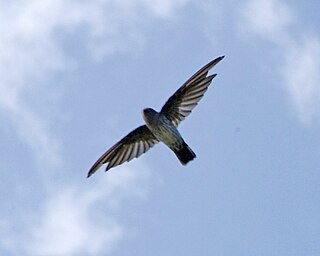
The cave swiftlet or linchi swiftlet is a species of swift in the family Apodidae. It is found on the Indonesia islands of Sumatra, Java and Bali. It is a woodland species and nests in caves. The Bornean swiftlet was considered a subspecies, but is now usually considered distinct.

The Australian swiftlet is a small bird belonging to the genus Aerodramus in the swift family, Apodidae. It is endemic to Queensland in north-eastern Australia. It was formerly included in the white-rumped swiftlet but is now commonly treated as a separate species. It has two subspecies which are occasionally regarded as two separate species: A. t. terraereginae and A. t. chillagoensis.

Ravi Sankaran was an Indian ornithologist whose work concerned the conservation of several threatened birds of India. He was the Director of the Salim Ali Centre for Ornithology and Natural History, Coimbatore, Tamil Nadu.

Edible bird's nests, also known as swallow nests, are bird nests created from solidified saliva by edible-nest swiftlets, Indian swiftlets and other swiftlets of the genera Aerodramus, Hydrochous, Schoutedenapus and Collocalia, which are harvested for human consumption.

The Apodinae are a subfamily of swifts and contain the following species:

The plume-toed swiftlet is a small bird in the swift family Apodidae. It is found on some eastern Indian Ocean islands, the Malay Peninsula, Sumatra, and lowland Borneo.
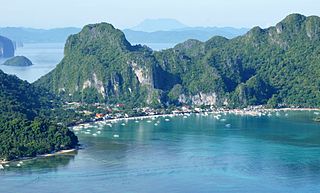
A busyador or a swift nest collector is a person who harvests edible bird's nests in Southeast Asia, and particularly in the Philippines. The nests are made of the birds' solidified saliva, and serve as the main ingredient of bird's nest soup, a delicacy of Chinese cuisine.



















